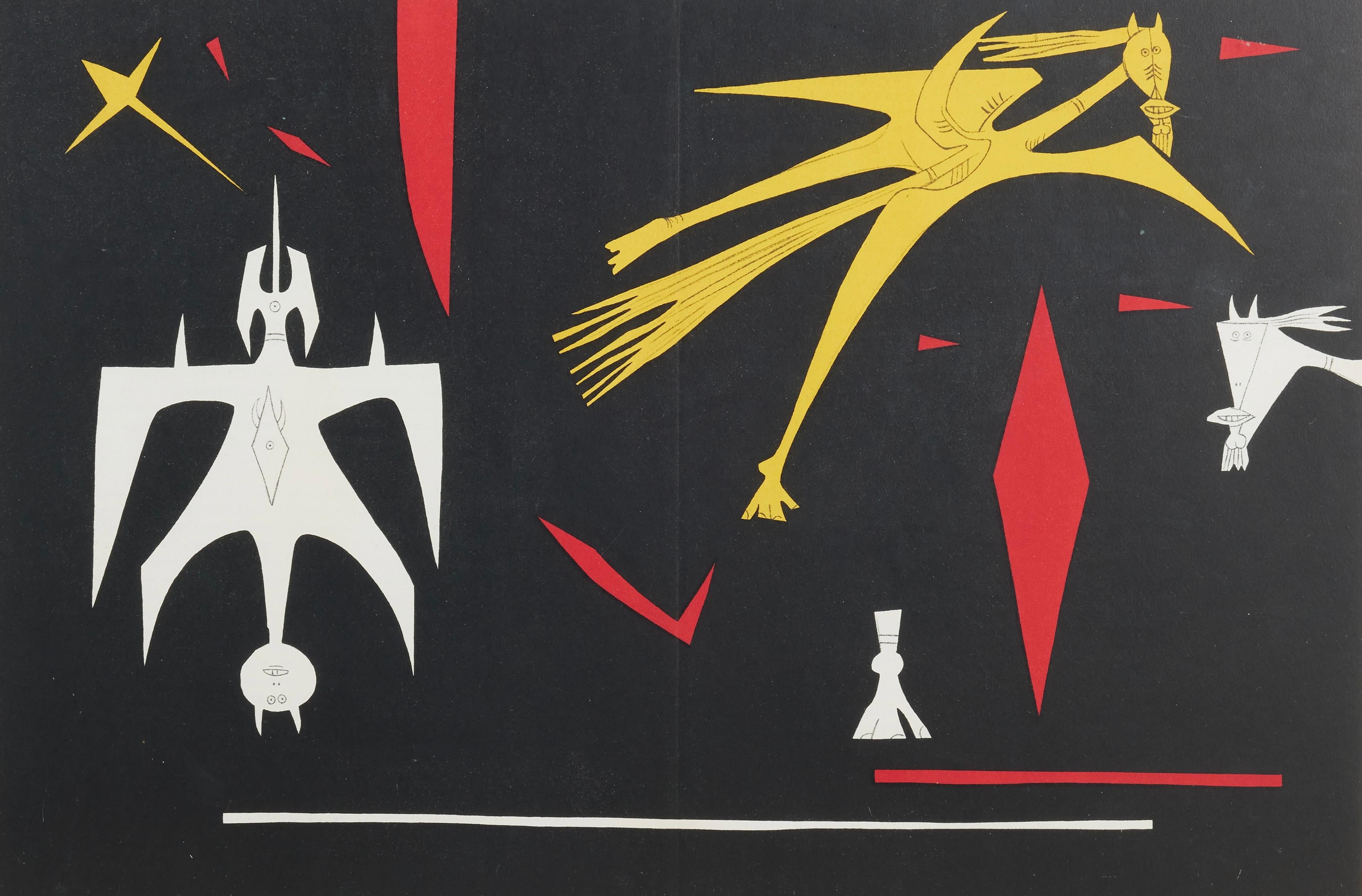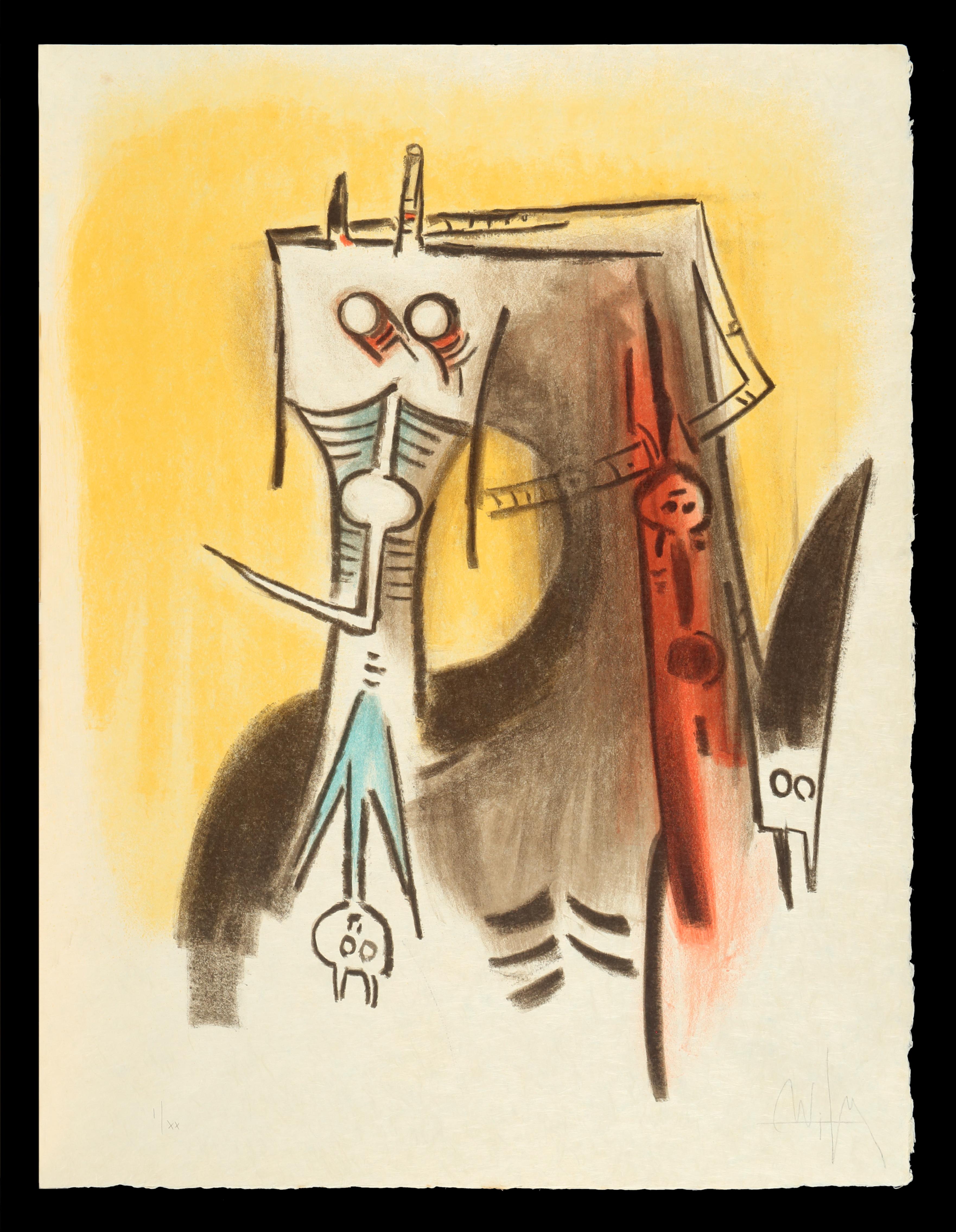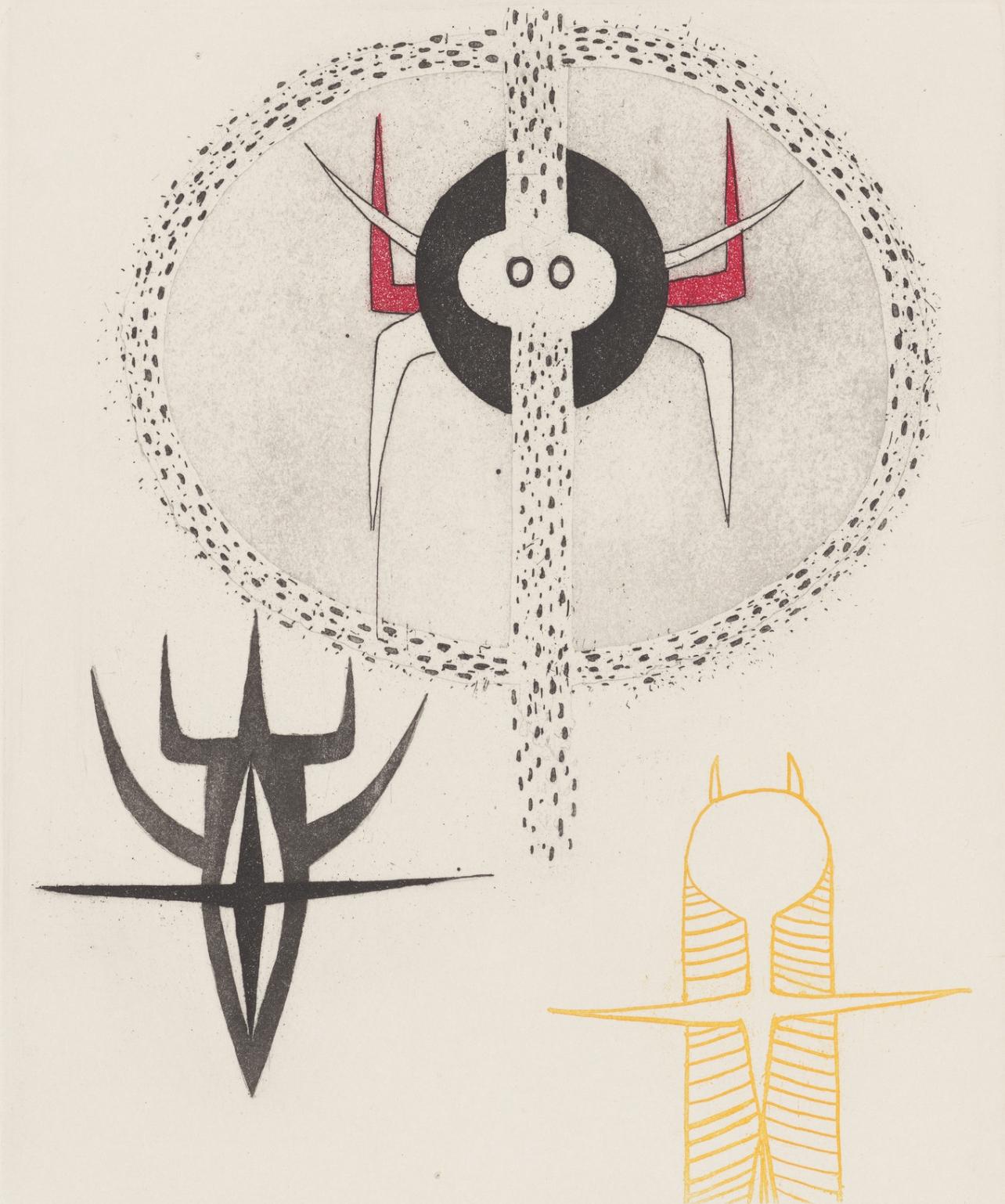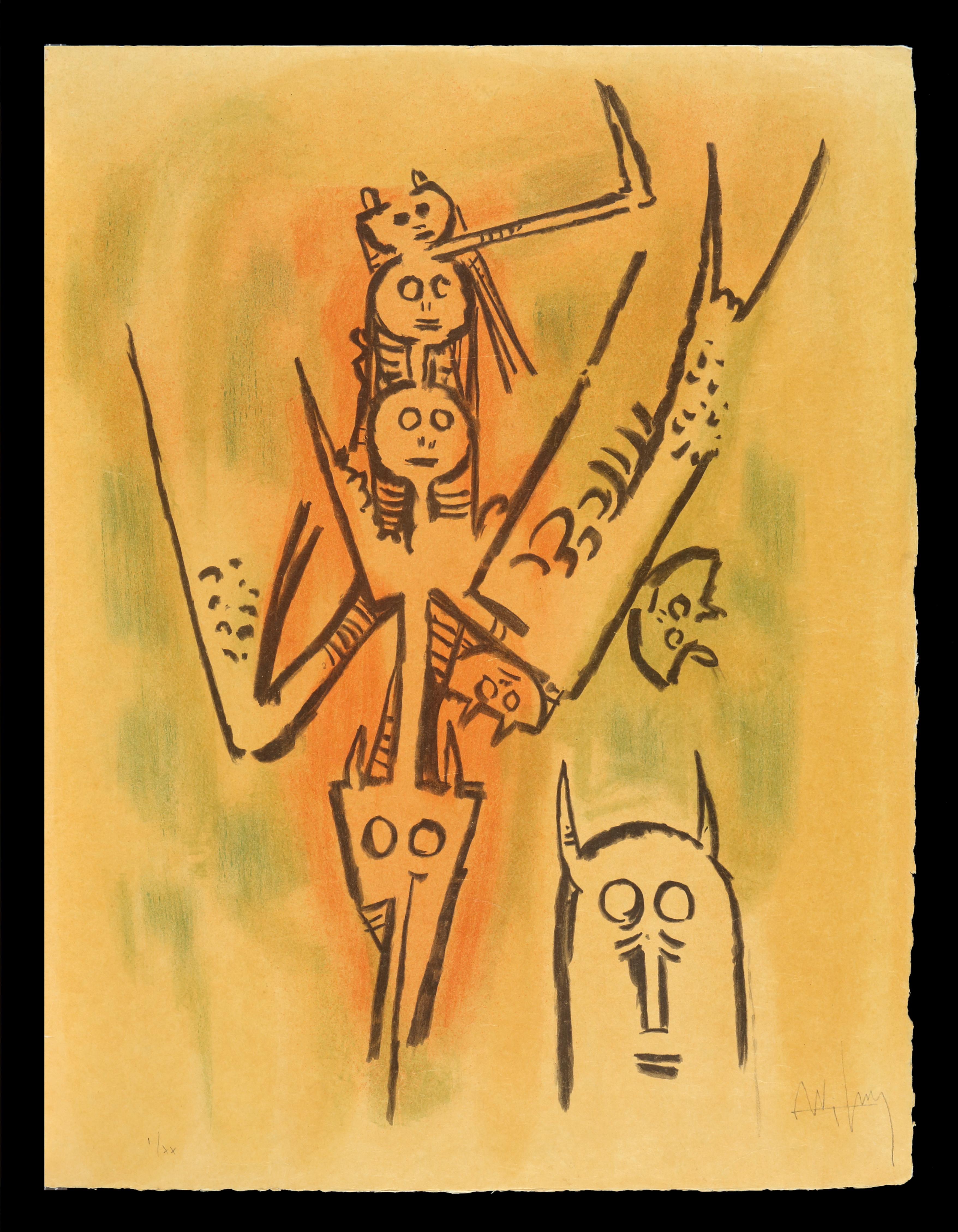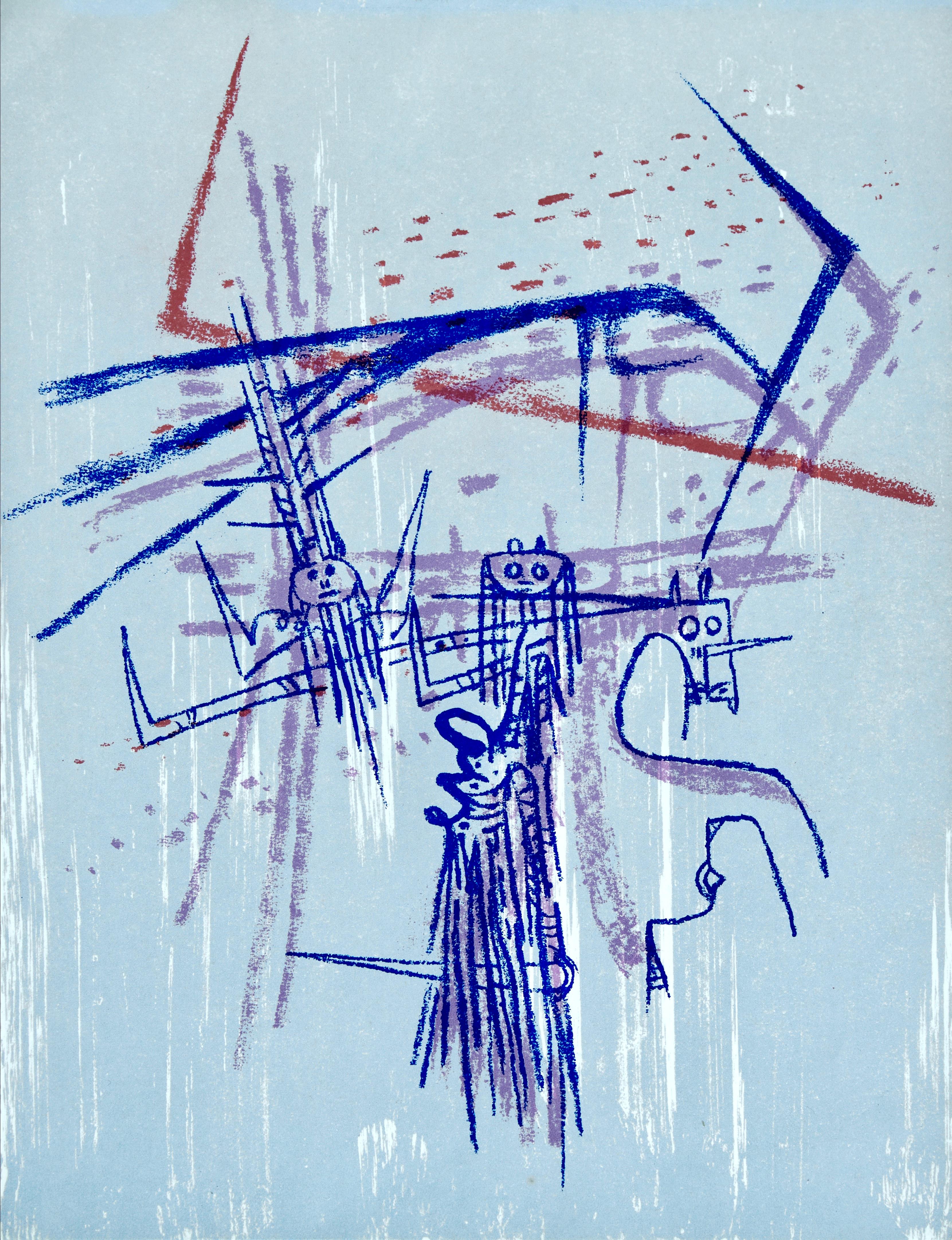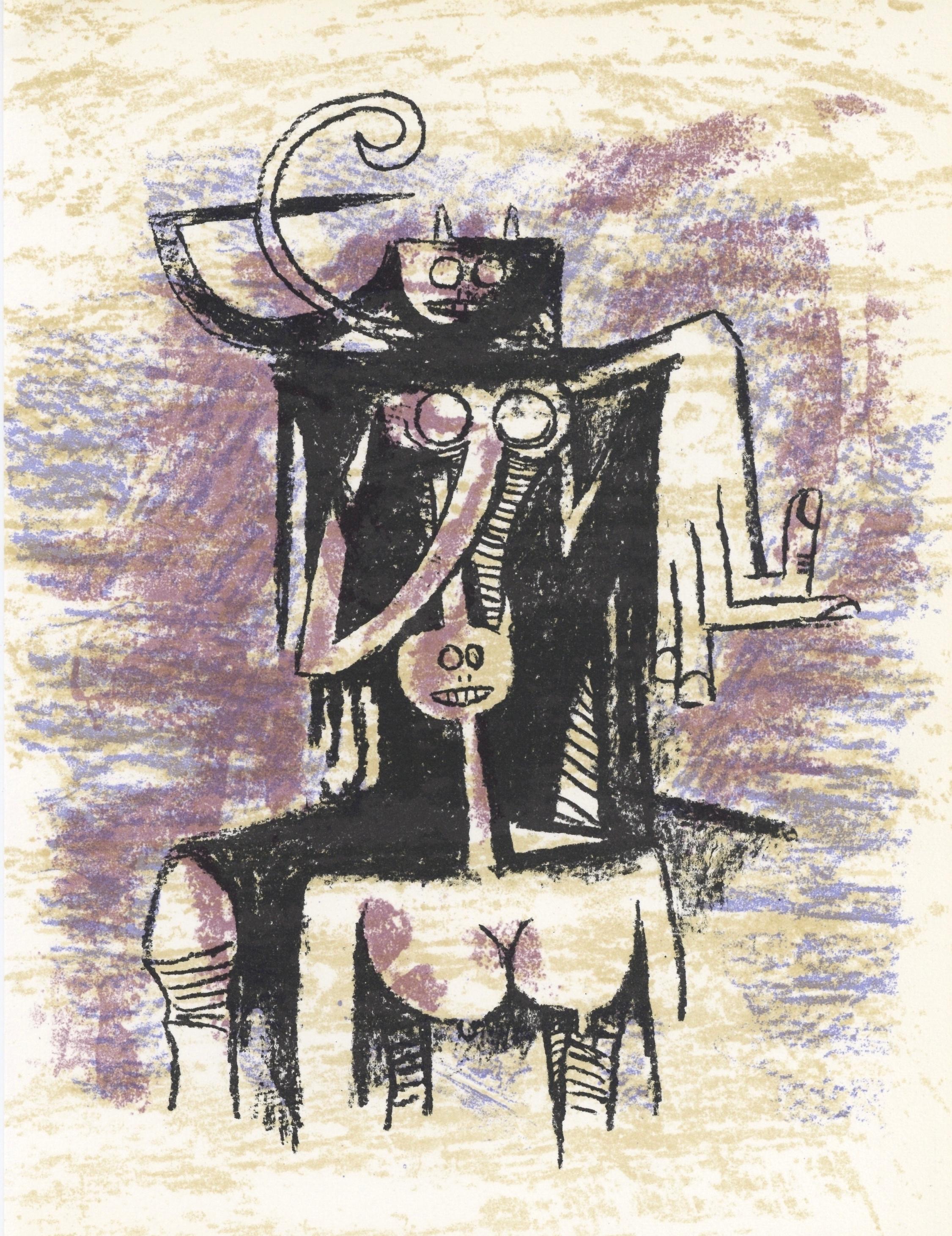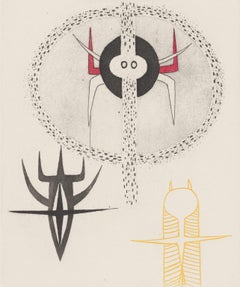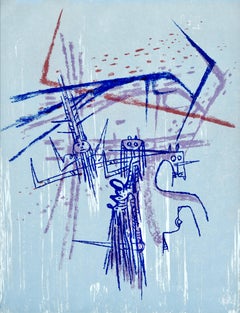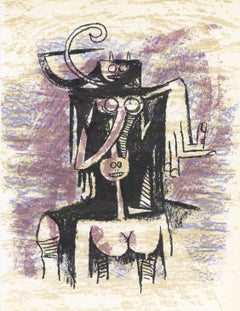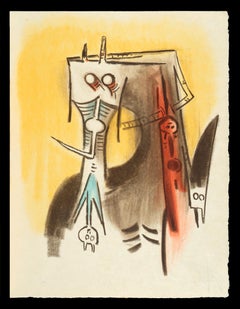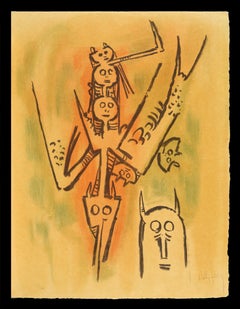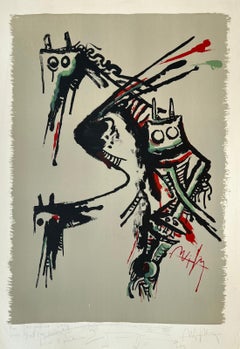This exquisite lithograph by Wifredo Lam (1902–1982), titled Figure Ailee (Winged Figure), from the folio Derriere le miroir, No. 55-56, originates from the 1953 edition published by Maeght Editeur, Paris, and printed by Mourlot Freres, Paris, 1953. This striking composition exemplifies Lam’s synthesis of Surrealism, Cubism, and Afro-Cuban spirituality—transforming hybrid figures and mystical symbolism into a dynamic vision of ancestral energy and cosmic unity. With its interplay of abstraction and ritual form, the work captures Lam’s lifelong dialogue between the spiritual and the modern.
Executed as a lithograph on velin paper, this work measures 15 x 11 inches. Unsigned and unnumbered as issued. The edition exemplifies the superb craftsmanship of Mourlot Freres, Paris.
Artwork Details:
Artist: Wifredo Lam (1902–1982)
Title: Figure Ailee (Winged Figure), from the folio Derriere le miroir, No. 55-56
Medium: Lithograph on velin paper
Dimensions: 15 x 11 inches (38.1 x 27.9 cm)
Inscription: Unsigned and unnumbered as issued
Date: 1953
Publisher: Maeght Editeur, Paris
Printer: Mourlot Freres, Paris
Catalogue Raisonne References: Tonneau-Ryckelynck, Dominique, et al. Wilfredo Lam: Oeuvre Grave et Lithographie Catalogue Raisonne. Musee de Gravelines, 1994, illustration 5303.
Condition: Well preserved, consistent with age and medium
Provenance: From the folio Derriere le miroir, No. 55-56, published by Maeght Editeur, Paris; printed by Mourlot Freres, Paris, 1953
About the Publication:
Derriere le miroir (Behind the Mirror) was one of the most important art publications of the 20th century, created and published by Maeght Editeur in Paris from 1946 to 1982. Founded by the visionary art dealer and publisher Aime Maeght, the series served as both an exhibition catalogue and a work of art in its own right, uniting original lithographs by leading modern and contemporary artists with critical essays, poetry, and design of the highest quality. Printed by master lithographers such as Mourlot Freres and Arte, Derriere le miroir became synonymous with the artistic vanguard of postwar Europe. Each issue was devoted to a single artist or theme and published to accompany exhibitions at the Galerie Maeght in Paris, featuring works by Pablo Picasso, Henri Matisse, Georges Braque, Joan Miro, Marc Chagall, Alexander Calder, Fernand Leger, and Alberto Giacometti, among others. The publication reflected Maeght’s belief that art should be both accessible and elevated—an ideal realized through its luxurious production values, meticulous printing, and collaboration with the greatest creative minds of its time.
About the Artist:
Wifredo Lam (1902–1982) was a Cuban painter, printmaker, and sculptor whose visionary synthesis of Surrealism, Cubism, and Afro-Cuban spirituality established him as one of the most important and transformative artists of the 20th century. A pioneer of global modernism, Lam united Western avant-garde abstraction with non-Western mythology and ancestral ritual, creating a universal language of art rooted in hybridity, resistance, and spiritual depth. Born in Sagua La Grande, Cuba, to a Chinese father and Afro-Cuban mother of Congolese descent, Lam absorbed the island’s multicultural rhythms, from Santeria and Abakua rituals to the fluid intersections of African, Asian, and European traditions. After studying in Madrid, he moved to Spain in 1923 and was profoundly shaped by the modernist revolutions of Pablo Picasso, Alexander Calder, Alberto Giacometti, Salvador Dali, Joan Miro, Wassily Kandinsky, Marcel Duchamp, and Man Ray. The Spanish Civil War ignited his political consciousness and lifelong belief in art as a vehicle for liberation. Fleeing fascism, Lam arrived in Paris in 1938, where his friendship with Pablo Picasso proved pivotal—Picasso introduced him to Andre Breton, Max Ernst, and Paul Eluard, drawing him into the heart of Surrealism. When World War II forced his return to Cuba in 1941, Lam reconnected with his cultural roots and began to develop the mature style that defined his legacy: a bold synthesis of African-Caribbean myth and European modernist form. His masterpiece The Jungle (1943), now in the Museum of Modern Art, New York, features totemic hybrid figures and lush tropical forms that symbolize both spiritual power and postcolonial struggle, marking a turning point in modern art. Lam’s works throughout the 1940s–1970s—such as Zambezia, Zambezia (1950), Nativite (1959), and A Trois Centimetres de la Terre (1962)—continued to merge ancestral symbolism with biomorphic abstraction, creating compositions alive with rhythm, ritual, and transformation. Like Picasso, he redefined the figure; like Kandinsky, he infused abstraction with spiritual energy; and like Miro, he used symbolism to express dream and myth. His art became a visual manifesto for cultural reclamation and hybridity, inspiring later artists including Jean-Michel Basquiat, David Hammons, Kerry James Marshall, and Chris Ofili. Lam’s work has been celebrated in major retrospectives at the Tate Modern, Centre Pompidou, and Museum of Modern Art, and is held in leading collections worldwide. Standing alongside Pablo Picasso, Alexander Calder, Alberto Giacometti, Salvador Dali, Joan Miro, Wassily Kandinsky, Marcel Duchamp, and Man Ray, Lam remains a global icon of modernism—an artist who transformed the avant-garde into a universal language of the sacred, the political, and the poetic. His highest auction record was achieved by A Trois Centimetres de la Terre (1962), which sold for 9.6 million USD at Sotheby’s, New York, on May 17, 2017, reaffirming his enduring legacy as one of the most visionary and collectible artists of the 20th century.
Wifredo Lam Figure Ailee Derriere le miroir No. 55-56, Lam Mourlot Freres, Lam Maeght Editeur, Lam velin paper, Lam collectible lithograph.
